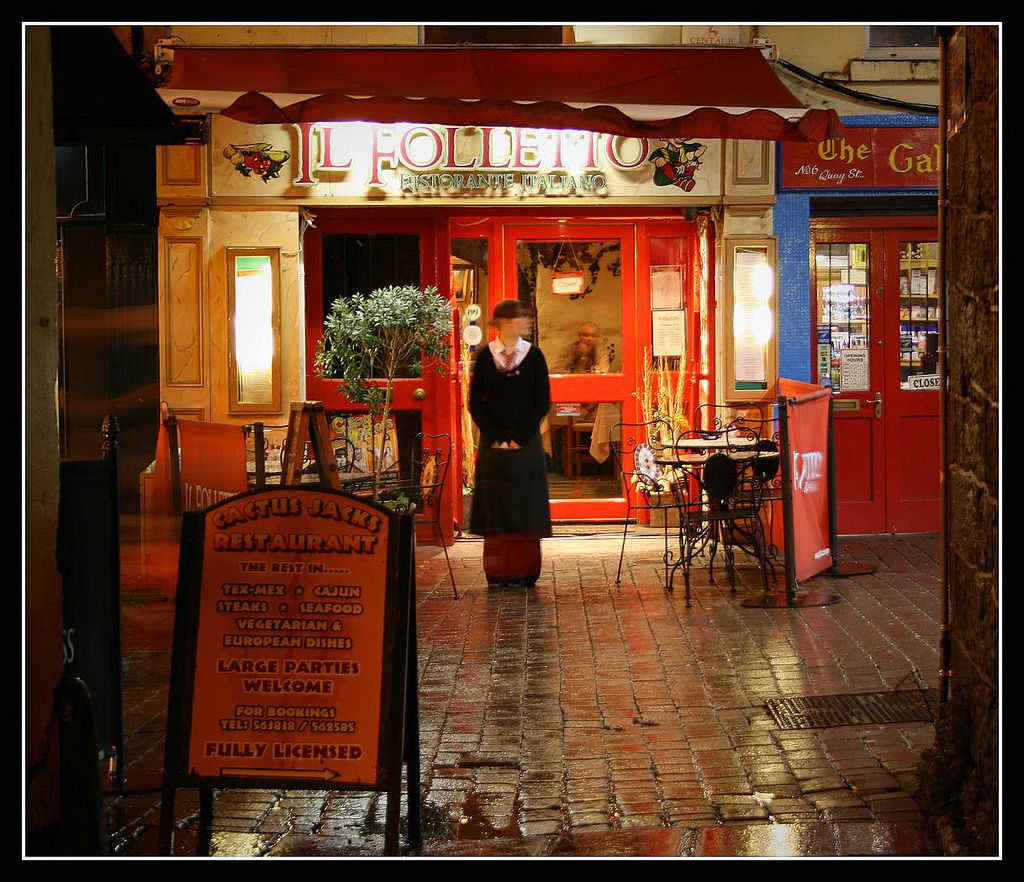 My brother came over this morning and he started telling me about his
date Saturday night...well not so much about his date but about the
great experience he had at The Yard House...the exceptional service,
truly well prepared food and did he mention the awesome service...which
got us on to this jag about the state of "service" in our Industry...not
a new one to us or anyone else who decides to go out to eat in a full
service restaurant these days.
My brother came over this morning and he started telling me about his
date Saturday night...well not so much about his date but about the
great experience he had at The Yard House...the exceptional service,
truly well prepared food and did he mention the awesome service...which
got us on to this jag about the state of "service" in our Industry...not
a new one to us or anyone else who decides to go out to eat in a full
service restaurant these days.We are all aware that the day of the 6000-15000sf restaurant is largely a thing of the past...even the popular casual dining chains have lessened their footprints to 3000-4500sf. The reason...Labor Dollars...it takes a large staff and the willingness to spend on employees to properly staff a large building in order to give good, much less great service.
In addition to downsizing the units the corporations kept growing and the need to pay the higher corporate costs put pressure on the the units...so in their infinite wisdom the concept of "Minimal Staffing" was enacted and budgets were made accordingly...in order for anyone to make a bonus, not to mention keep their jobs, the focus turned from the dining room to the clock...and this friends was the end of service as we knew it!
Now, with their heads buried in the books and corporate ass saving, the people in charge have forgotten that by definition they are THE "Service & Hospitality" Industry, where exceptional service is what brings people back again and again...it's what differentiates... Now we are in the business of cutting labor to meet a budget in order to pay people at the top large bonuses....
 As to the Guest...well the corporate
attitude is "there are plenty of people where they came from... hey we
can throw out some coupons and discounts that will not affect our labor
dollars...lets do that to get new people...and don't forget...people are
stupid...they'll come back anyways..."
As to the Guest...well the corporate
attitude is "there are plenty of people where they came from... hey we
can throw out some coupons and discounts that will not affect our labor
dollars...lets do that to get new people...and don't forget...people are
stupid...they'll come back anyways..."(Coupons...that's a whole other rant...)
When we came up in the Industry we all had budgets...every business does...but when the organizations get so large that in order to sustain them the individual unit's labor budget is cut to the point that service is an altogether thing of the past...and then to make it worse...EVERY year the labor budgets are less than the year past...
Lets look at a simplified example of how this works...
#1 Rule in the Industry - Hot Food Served Hot
- need an expeditor to organize the food coming out of the kitchen in order to not get cold
- need a food runner to take the food out to the dining room
- need a server to take order, bring drinks, serve food and care for guests
In order to save labor dollars most companies have directed their units through aggressively cut budgets, to eliminate the Expeditor and Food Runner and have the servers pick up the slack...and hey...while we're at it, let's get rid of the Pantry Person and the servers can make the salads as well...hey and we really don't need to have a hostess on all the time...let's have the servers watch the front door and answer the phone as well...now let's tell the managers that they need to work harder to displace labor in case it's needed...but be available to pick up coupons from every table and don't forget to "touch every table"...and make sure that you call the supervisor to explain why your labor is off....





